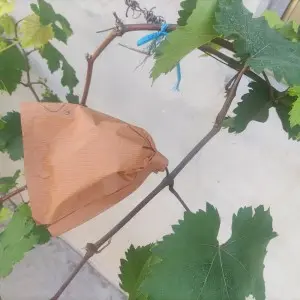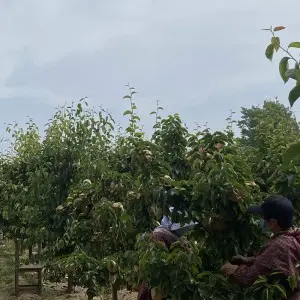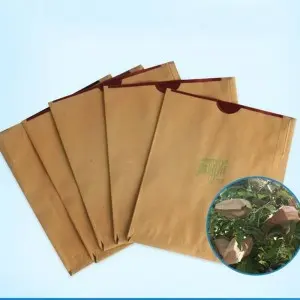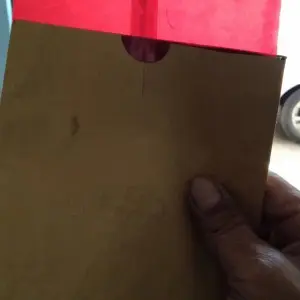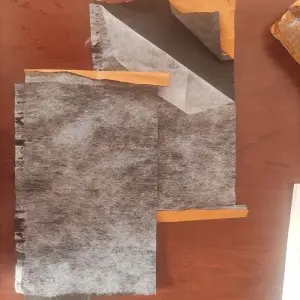FRUIT PAPER BAGS FOR PREVENTING INSECTS AND PESTICIDE RESIDUES IN ORCHARDS
Product Description
- Bagging shall be carried out on sunny days.
2. Before bagging, remove the excess leaves on the fruit stalk or ear base.
3. Before bagging, spray the fruit with insecticides allowed by pollution-free food, wait until the liquid medicine is dry, and the fruit sprayed on the same day will be covered on the same day.
4. Bananas were bagged 15 ~ 20 days after bud breaking. Longan litchi is processed after fruit thinning. Pears and peaches are bagged about 30 days after flower fading. Mango should be harvested 45 ~ 60 days before harvest. Loquat is bagged after fruit thinning and fruit fixing about 30 days after flower fading. Pomelo and citrus are bagged from mid May to early June.
Orchard management before bagging
(1) Reasonable pruning: Bagged orchards should adopt reasonable tree structure. Apple and pear are mainly in the shape of small crown and sparse layer, and the improved spindle shape of three main branches at the base. The pruning is mainly light pruning and sparse pruning, and the combination of winter and summer pruning can adjust the number and spatial distribution of fruit branch groups to solve the problems of wind and light; Peach mainly retracts the weak branches, eliminates the prosperous and long branches, and throws away the fruiting branches to maintain the momentum of the golden mean tree; Grapes mainly remove over dense branches and vines, re cut weak branches and vines, and do a good job in wiping and binding vines.
(2) Strengthen soil, fertilizer and water management: the bagged orchard should strengthen soil improvement to make the depth of the live soil layer of the orchard reach 80cm. Mountain orchards should store rainwater as much as possible while deepening the soil layer. In addition, bagged orchards should adopt green grass system to increase the content of soil organic matter, improve soil aggregate structure and maintain water and soil. White clover and ryegrass should be selected as grass species. Bagged orchards should increase the application of soil and miscellaneous fertilizers, as well as micro fertilizers such as borax and zinc sulfate; The top dressing is mainly nitrogen fertilizer to promote the early growth and development of fruit trees; Amino acid calcium fertilizer was sprayed once 2 weeks and 4 weeks after anthesis to effectively reduce or prevent the occurrence of bitter pox. Generally, watering shall be carried out before flowering and bagging to maintain the soil water content at 70 ~ 75% of the field capacity.
(3) Thinning flowers and fruits and reasonable load: the orchard needs artificial assisted pollination or bee release during flowering; Before bagging, the flowers and fruits shall be thinned strictly, the load of the tree body shall be adjusted, and the technology of fixing fruits with flowers shall be implemented. Apple, pear and other tree species shall leave one strong inflorescence at a spacing of 20 ~ 25cm, one fruit for each inflorescence, one fruit for peach at a spacing of 10 ~ 15cm, one ear for each fruiting shoot of grape, 50 ~ 60 grains per ear, and the flower and fruit thinning work shall be completed one month after falling flowers.
1. Bagging can delay the aging of fruit epidermal cells, delay and inhibit the formation of fruit spots and fruit rust.
2. Bagging can reduce the mechanical damage of peel and insect bite wounds.
3. It can reduce the fruit drop caused by the gnawing of pests and birds.
4. It can reduce the number of pesticide spraying and reduce the pesticide residue on the fruit.
5. After bagging, the edible part of the fruit increases because the peel becomes thinner and the taste will become more delicate.
6. After bagging , it can increase the storage tolerance of fruits. We can produce all kinds of paper bags and polyethylene insect and wind shields. If you have any idea, please feel free to contact us at email: 369535536@qq.com , we will solve all kinds of fruit bagging problems for you through our professional technology. Looking forward to your consultation.

